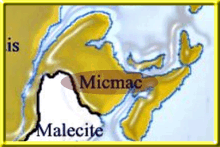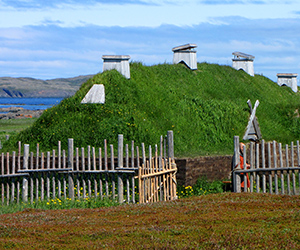CANADA HISTORY
Kainai

The Kainai people, also known as the Blood Tribe, are a Blackfoot First Nations people who are indigenous to southern Alberta, Canada. Prior to contact with Europeans, the Kainai people had a rich culture and history that revolved around their traditional way of life as a nomadic Plains Indian tribe.
The Kainai were part of the larger Blackfoot Confederacy, which also included the Siksika and Piikani tribes. They were known for their exceptional horsemanship and their use of horses in hunting and warfare. They were also skilled in bison hunting, which was a crucial part of their subsistence and cultural traditions.
The Kainai had a strong oral tradition and their beliefs and stories were passed down through generations. They had a spiritual connection to the land and animals and held a deep reverence for the natural world. They also had a complex social and political structure, with each band led by a headman and council of elders.
Prior to European contact, the Kainai lived a self-sufficient and sustainable lifestyle, relying on the resources of the land to meet their basic needs. The arrival of Europeans brought many changes to the Kainai way of life, including the introduction of new technologies, diseases, and policies that impacted their sovereignty, culture, and traditions. Despite these challenges, the Kainai people have maintained their strong connection to their cultural heritage and continue to celebrate and preserve their traditions today.
The Kainai people, like many indigenous peoples of North America, had a complex and deeply spiritual belief system that was centered on their relationship with the natural world. They saw all living things as connected and held a deep reverence for the spirits of the animals, plants, and other elements of the natural world.
The Kainai believed in a pantheon of powerful spirits, including the Sun, the Moon, the Morning Star, and the Thunderbird. They also believed in the existence of powerful and benevolent spirits that could help them in their daily lives, as well as malevolent spirits that could cause harm.
In their religious practices, the Kainai performed various ceremonies and rituals to ensure the well-being of their community, to honor their ancestors and the spirits, and to secure bountiful hunting and successful crop harvests. These ceremonies often involved the use of sacred objects, such as masks, and the singing of songs, prayers, and offerings of tobacco.
The Kainai also had a strong tradition of dream interpretation, in which dreams were seen as a source of guidance and messages from the spiritual world. In this way, the Kainai's beliefs and spiritual practices were deeply intertwined with their daily lives and their relationship with the natural world.
The first recorded contact between the Kainai people and Europeans occurred in the late 1700s and early 1800s, as European fur traders and explorers began to penetrate the interior of North America. The exact date of this initial contact is not well documented, but it is known that the Kainai people were among the first Indigenous peoples of the Plains to encounter Europeans.
During this period, the Kainai people were part of the larger Blackfoot Confederacy, which also included the Siksika and Piikani tribes. They were known for their exceptional horsemanship and their use of horses in hunting and warfare, which made them formidable allies and opponents for the Europeans.
Initially, the Kainai people had a cautious and wary relationship with the Europeans, but over time they began to establish trade relations, exchanging goods such as horses, bison hides, and buffalo robes for European goods like metal tools, firearms, and textiles. However, as more Europeans arrived in the region and began to settle, the relationship between the Kainai and the newcomers became increasingly fraught, as the Europeans began to encroach on Kainai lands and resources.
Here are a few of the main events and their dates in Kainai history:
First contact with Europeans (late 1700s and early 1800s) - The first recorded contact between the Kainai people and Europeans occurred as European fur traders and explorers began to penetrate the interior of North America. This initial contact marked the beginning of a long and complex relationship between the Kainai and Europeans.
Signing of Treaty 7 (1877) - Treaty 7 was signed between the Canadian government and several First Nations groups, including the Kainai, Siksika, and Piikani. The treaty established the reserves on which the Kainai people currently live and provided them with certain rights and benefits. However, the treaty also resulted in the loss of vast amounts of Kainai traditional lands and resources.
The arrival of the Canadian Pacific Railway (1883) - The construction of the Canadian Pacific Railway brought large numbers of settlers to the Kainai's traditional territories, leading to further encroachments on their lands and resources.
The Kainai people were not directly involved in the 1885 North-West Rebellion, also known as the North-West Resistance, which was a conflict between the Métis people of the Canadian prairies and the Canadian government. However, the Kainai people, along with other Indigenous nations in the region, were affected by the events of the uprising and its aftermath.
The North-West Rebellion was sparked by a number of grievances, including the loss of Métis land rights and the perceived injustices of the Canadian government's policies towards Indigenous peoples. The rebellion was led by Louis Riel, a Métis leader, and included several battles between Métis and Canadian forces.
The Kainai people, along with other Indigenous nations in the region, were caught in the middle of the conflict and faced significant challenges as a result. Many Kainai people were forced to flee their traditional territories due to the conflict, and the Canadian government's response to the uprising had a lasting impact on Indigenous communities in the region.
In the aftermath of the uprising, the Canadian government implemented a number of policies aimed at suppressing Indigenous cultures and assimilating Indigenous peoples into Canadian society. These policies had a profound impact on the Kainai people and other Indigenous nations, and contributed to the loss of cultural traditions and the erosion of Indigenous sovereignty.
The establishment of residential schools (1880s to 1996) - The Canadian government established a network of residential schools, which were designed to assimilate Indigenous children into Canadian culture. Thousands of Kainai children were forced to attend these schools, where they were subjected to abuse, neglect, and cultural suppression.
The Indian Act (1876) - The Indian Act is a piece of Canadian legislation that governs many aspects of Indigenous life, including land use, education, and social services. The act has had a significant impact on the Kainai people, limiting their sovereignty and limiting their ability to preserve and protect their cultural heritage.
The Blood Reserve Act (1978) - The Blood Reserve Act was enacted to give the Kainai people greater control over their own affairs and to recognize their right to self-government. The act resulted in the establishment of the Blood Tribe Department of Lands and Natural Resources, which is responsible for managing the Blood Reserve and its resources.
Some or the important leaders were:
Crowfoot (1830-1890) - Crowfoot was a highly respected Kainai chief and warrior who played a significant role in Treaty 7 negotiations. He was known for his diplomacy and his efforts to maintain peace between the Kainai and the Canadian government.
Red Crow (1830-1890) - Red Crow was a Kainai chief who was known for his resistance to Canadian colonization and for his efforts to protect Kainai lands and resources. He was a key figure in the early years of Kainai-European relations and is remembered for his leadership and courage.
Pretty Shield (1856-1944) - Pretty Shield was a Kainai medicine woman who was known for her knowledge of traditional healing practices. She was a key figure in the preservation of Kainai cultural heritage and played an important role in passing down Kainai stories, traditions, and beliefs to future generations.
Chief Bull Shield (1910-1997) - Chief Bull Shield was a Kainai leader who played an important role in the establishment of the Blood Tribe Department of Lands and Natural Resources. He was known for his efforts to improve the lives of Kainai people and to preserve their cultural heritage.
Percy Bullchild (1933-2000) - Percy Bullchild was a Kainai author, educator, and leader who played an important role in preserving and promoting Kainai culture. He was a strong advocate for Indigenous rights and worked to raise awareness of the history and culture of the Kainai people.

Cite Article : www.canadahistory.com/sections/documents




